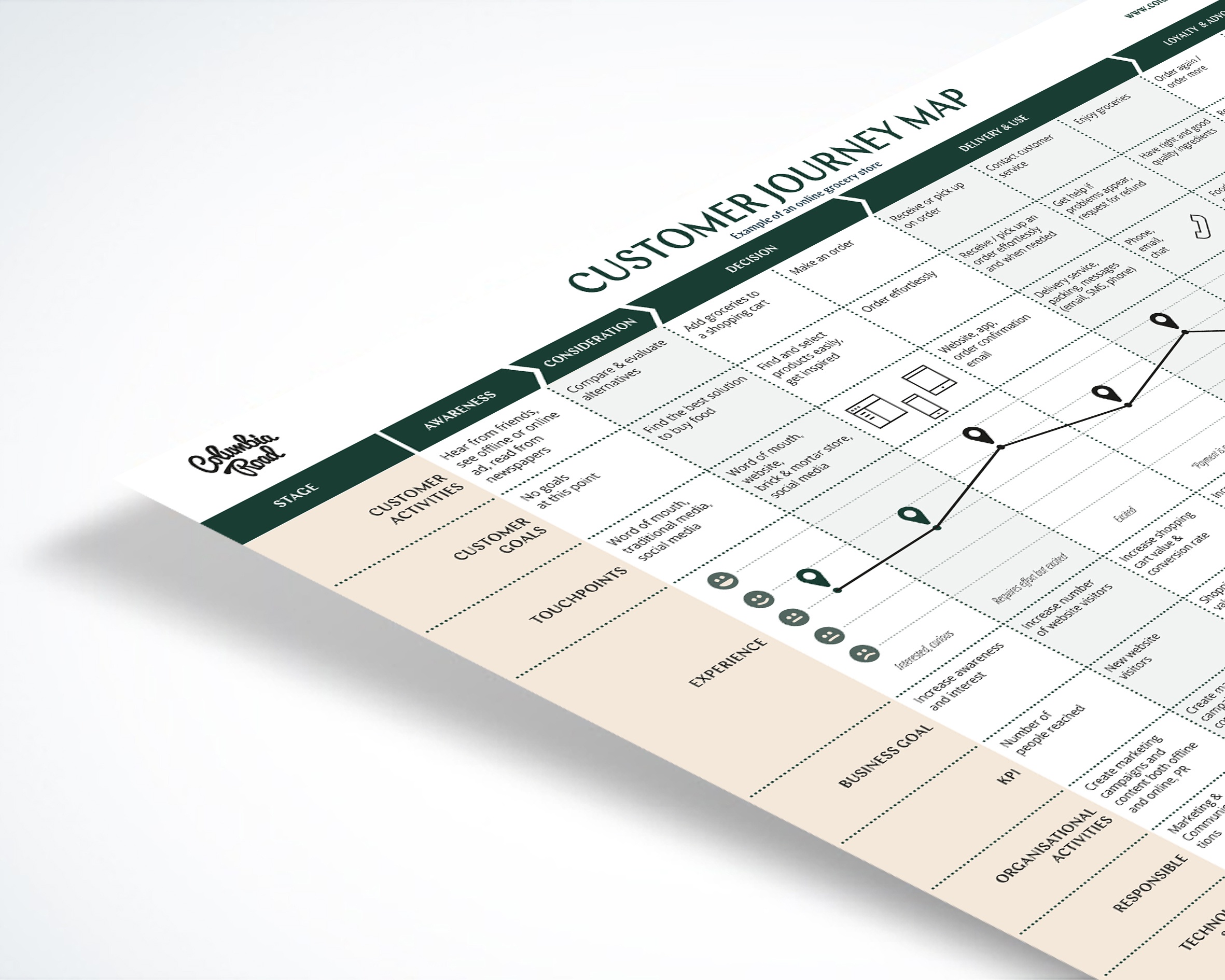The Data Handbook
How to use data to improve your customer journey and get better business outcomes in digital sales. Interviews, use cases, and deep-dives.
Get the book
Search engine optimisation is crucially important for both direct ecommerce and more indirect approaches to online business. Despite organic search bringing in the lion’s share of traffic and typically ranking towards the top of online conversion rates, SEO doesn’t always get the attention it should. This could be due to the lack of quick wins, and the flare of other media.
While the wins from SEO may not be quick, they can be huge. And while the optimisation cycle is longer than other media, growth hacking SEO is vitally important in solidifying your gains elsewhere, and scaling your business.
That being said, search engine optimisation is also a moving target. SEO of 2019 is quite different from the SEO of even a few years ago. Here are some SEO trends for 2019 that you should be aware of when building your site for ecommerce success.
1. Customer understanding is at the heart of effective SEO
Customer understanding has been important for search engine optimisation for a few years now, so I can understand people thinking this is nothing new. The question, I think, is about the degree to which this will be in focus for the coming year and beyond.
Understanding your customers, what kinds of things they are interested in finding out, how they are looking for it, and aiming to answer these needs is at an intersection of several SEO trends that will be shape the industry in the near future: artificial intelligence/machine learning, voice search, structured data, and the world of abundant content we currently live in.
1 a) Voice search
While voice search has undoubtedly been hyped up quite a bit, there is equally little doubt it has already had a significant impact on search engine optimisation, and will continue to have one in the future. Voice search — while a useful tool at home, or individual offices — is limited in public spaces where people don’t want surrounding people to know what they are doing.
The spread of voice search in smaller languages has also limited the use of voice search in, for instance, Finland. But while direct use of voice search may remain to some extent limited, the focus search engines have placed on voice search also affect the industry through their linkages to other industry trends as well. Especially the ones that relate to customer understanding.
1 b) Structured data and rich results
Partly due to the drive toward voice search, search engines have had to create new types of rich results to function as the single result of a voice search — voice searches just don’t play well together with traditional multi-result SERP’s. Catering for this type of single result searches, structured data can provide easy access for search engines to match results with the specific question being asked. Besides being useful for voice and question based search, structured data is also key for future advances in search engine ranking algorithms and the creation of more customer-oriented SERP formats.
1 c) Artificial intelligence in SEO
Artificial intelligence has become so hyped it tends to result in backlash for some people (including myself to an extent). It’s impact for the field of search, however, cannot be overlooked — at least not for long.
Artificial intelligence in search currently has to do mostly with understanding user intent and matching it with the best content available. For Google this essentially boils down to their RankBrain algorithm which is currently the third most important element determining search result rank. RankBrain essentially runs a machine learning algorithm connected to user metrics such as CTR and time-on-site to determine which result seems to best match user intent. Bing also uses AI to understand image results online and match them to search queries accordingly.
User side AI solutions can also be highly useful in analysing user intent and behavior for individual sites, and planning the optimal strategies to acquire the largest possible amount of subject specific traffic to your website. These strategies link even more directly to the issue of content quality. For some quick ideas on this, I recommend following the discussions on Search Engine Journal, Search Engine Roundtable, or having a quick look at this blog on machine learning SEO by Vertical Leap.
1 d) Quality content to better serve your customers
In the end, the larger issue of customer understanding really boils down to one question: do you have useful, quality content for the customer along each step on their path to purchase. Another way of saying this is: “Are you serving your customers to their satisfaction?”
Search is a unique media in that it truly cuts through the entire customer journey. Interested in a general topic? Google it! Looking to determine how to choose the right product? Wonder what Bing can tell me…? What would this cost on Amazon? Hey Alexa! Being where your customer is, and having corresponding quality content really is the key to success — AI, voice search, and the likes are just the dents and grooves to make that key fit the lock.
2. Mobile first indexing and speed
The rising importance of online mobile devices has likely not escaped any one of you. More and more people are moving their internet use to mobile. While the impact on direct mobile conversions in ecommerce tends to depend on the industry and products for sale, the impact of mobile on more top-of-the-funnel visibility is hugely important.
In 2018 Google launched its mobile-first indexing model. This means that Google now considers your mobile site to be the primary version of your site. The time for creating shortened content on separate mobile pages is over. Start designing your sites with mobile usability first and foremost on your mind — unless you already have.
While mobile first indexing will likely be more of an issue for sites running separate m.site.com mobile sites, it does change the way people should approach their design and coding, as mobile first indexing will likely put ever more emphasis on proper layouts, good accessibility and UX on smaller devices, as well as adding importance to structured data on pages where UX won’t allow for longer content, but need to rank directly — such as ecommerce sites.
So, while mobile first indexing might not be much of an issue if you are running a lean, responsive, modern website or shop, you might need to re-thing your design processes to make sure your mobile rank will not suffer due to the type of content you need to work with on mobile.
3. Expertise, Authority, Trust, or the E-A-T model
In late 2018 Google announced a change to their core algorithm, which had the largest impact on search rankings in the past several years. Particularly hurt were the medical industry, and ecommerce sites. This was due to the E-A-T model which has placed a larger emphasis on sites’ authority and trust — likely partly as a response to the amount of trolls, bots, and fake news sites in recent years.
Google’s response has been to increase emphasis on the expertise, authority, and trust of each page and website. Guidelines on how to improve your E-A-T are quite extensive. Essentially, however, they boil down to a few central factors. 1) Is your site’s content created by respected authorities in the field? 2) Is the expertise validated by external authorities on the topics it relates to? 3) Does the site transparently present the people working for it, the way it operates, and the sources it uses as references?
While some aspects of this can be achieved by technical solutions on your website, this also substantially increases the importance of collaboration networks, jointly created content, and building the network of links backing up your website and it’s content. It also places a premium on personal branding of your employees — or at least a select group of them — to make sure your site is seen as authoritative in its field.
One more aspect of the E-A-T model to take note of is the likely reason for ecommerce sites being hurt by the algorithm change in 2018. The algorithm hit particularly hard on pages concerning your money, your life (YMYL). eCommerce sites are directly linked to the financial interest of its customers, and thus needs to be highly authoritative to overcome the closer scrutiny from Google. Ecommerce sites should make sure they are open, transparent, secure (please use https by now!), and build their authority through outside collaboration.
4. Search engine optimisation for Amazon (and elsewhere)
While we have focused mainly on Google (as the largest search engine), and Bing thus far, we should not ignore other platforms when discussing search engine optimisation. There are various other platforms that feed into the overall search experience of customers. The big elephant in the room, of course, being Amazon.
For larger markets, optimising for Amazon has been a no-brainer for a long time now. It is so integrally linked to the way people search for items they might want to buy, it is barely possible to separate the two. (Amazon receives 55% of total product related searches across platforms¹). Nearly 90% of these searches are conducted on Amazon itself, and the remainder is split between several sources of traffic, only one of which is Google search results. While no one knows if Amazon comes to Finland or Sweden after all, it is still a significant sales platform in Finland as well, and really a must for businesses looking to grow internationally.
The second largest issue to consider for search optimisation outside of the biggest player in town, is a bit ironically...Youtube. The importance of Youtube as a stand-alone search engine cannot be ignored, but neither can its impact on the ranking on the primary search engine Google. Video has such high user experience metrics, that when properly executed they can dramatically improve visibility of the pages they are embedded in.
App-stores, image search, and intra-site search partnerships shouldn’t be forgotten about either. While the bread-and-butter of search will likely remain a game for Google, Amazon and Microsoft for some time (sorry, DuckDuckGo), search should no longer be thought of simply ranking on Google, but being available when and where people are looking for the services you provide.

5. Technical SEO isn’t going away - be mindful of your tech stack!
The final thing to mention here is perhaps less of a trend than a warning against a trend. Don’t get too far ahead of par with your technology stack, or you might get burned!
The advances being made in online coding, particularly through the ever expanding list of JavaScript libraries, are allowing for more powerful sites with amazing functionalities and visual designs. They also allow for powerful customisation tools to customise user experience and offering based on background information about the people visiting the site.
These powerful tools, currently, tend to cause serious issues for search engines and web-crawlers in understanding what the sites are about, and thus having your rank suffer. While for Google this might only result in a lag of few days in indexing, running AJAX filled websites can have devastating effects for visibility on other search engines. And while Google is the market leader in search for most countries, you shouldn’t shoot yourself in the foot by missing out on the 10-15% of search traffic typically out there on search engines outside of Google. Finding the proper balance between performance and search engine readability will be crucial to your success.
The Data Handbook
How to use data to improve your customer journey and get better business outcomes in digital sales. Interviews, use cases, and deep-dives.
Get the book




